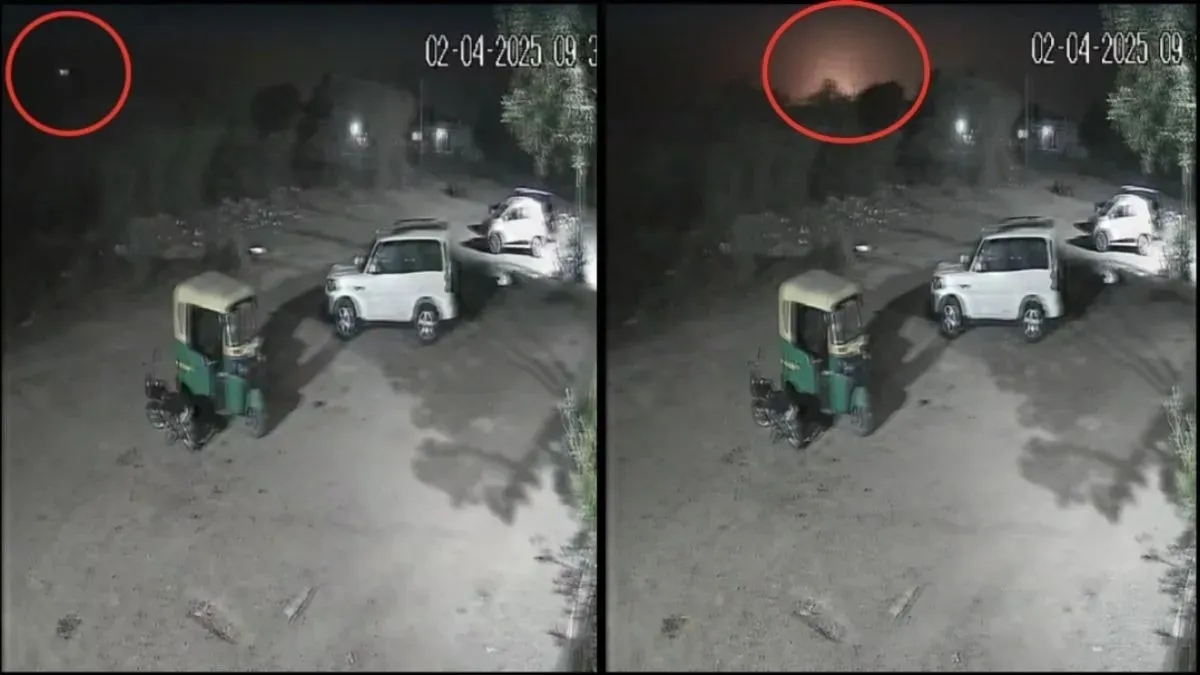SOURCE: AFI


A recently surfaced CCTV footage from a different angle has shed new light on the tragic crash of an Indian Air Force (IAF) Jaguar fighter jet near Jamnagar, Gujarat, which occurred on the night of April 2, 2025. The video provides a clearer timeline of the incident, revealing that the rear pilot ejected just two seconds before the aircraft slammed into the ground, potentially at an altitude insufficient for a safe ejection. This critical detail may explain why one pilot, Flight Lieutenant Siddharth Yadav, lost his life, while the second pilot survived with injuries.
The footage captures the harrowing final moments of the two-seater Jaguar, which was on a routine night training mission when it encountered a catastrophic failure. According to analysis of the video, the aircraft experienced an initial fire—believed to be triggered by a bird hit—17 seconds before it crashed into an open field in Suvarda village, approximately 12 kilometers from Jamnagar city. The jet, which took off from Jamnagar Airfield, plummeted to the ground and erupted into a massive fireball upon impact, as emergency services rushed to the scene.
In the newly released footage, the second pilot’s ejection is visible a mere two seconds before the crash. Experts suggest that this last-second ejection likely occurred at an altitude too low for the parachute to fully deploy and slow the pilot’s descent, contributing to the fatal outcome for Flight Lieutenant Yadav. The other pilot, Group Captain Manish Kumar Singh, ejected earlier and survived, though he sustained a compound fracture in his right leg and minor burns. He is currently recovering in stable condition at the Military Hospital in Pune.
The IAF has confirmed that the pilots faced a technical malfunction mid-flight, prompting them to initiate ejection to avoid harm to the airfield and local population. However, the exact reason why Yadav’s ejection was delayed remains under investigation. Posts on X and preliminary reports speculate that the malfunction may have incapacitated one of the ejection systems or that Yadav prioritized ensuring his co-pilot’s safety, steering the aircraft away from populated areas before attempting his own escape. His heroic actions are credited with preventing civilian casualties, as the jet crashed in an isolated field.
The timeline established by the footage—17 seconds from the initial fire to the crash—underscores the rapid sequence of events that left little room for error. The suspected bird hit, a known hazard in aviation, may have sparked the chain reaction that led to the jet’s loss of control. The IAF has ordered a Court of Inquiry to determine the precise cause of the accident, including whether the bird strike, mechanical failure, or a combination of factors was responsible.
Eyewitnesses and villagers who rushed to the crash site reported a deafening explosion and thick smoke rising from the wreckage. The jet’s debris was scattered across the field, with flames engulfing the remains of the aircraft. Local authorities and the Jamnagar Fire Brigade worked swiftly to extinguish the blaze, while a search operation located the injured pilot and confirmed Yadav’s tragic fate.
This incident marks the second Jaguar crash within a month, following a similar event near Ambala, Haryana, on March 7, where the pilot ejected safely after a system malfunction. The ageing Jaguar fleet, inducted into the IAF in the late 1970s, has been a workhorse for deep penetration strikes but has faced multiple accidents over the years, raising questions about its operational reliability.
NOTE: AFI is a proud outsourced content creator partner of IDRW.ORG. All content created by AFI is the sole property of AFI and is protected by copyright. AFI takes copyright infringement seriously and will pursue all legal options available to protect its content.